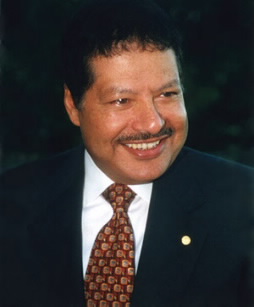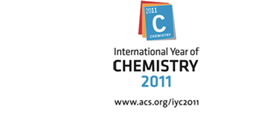EMBARGOED FOR RELEASE | March 29, 2011
American Chemical Society’s highest honor goes to pioneer in “ultrafast-motion” imaging
ANAHEIM, Calif., March 29, 2011 — Ahmed H. Zewail, Ph.D., 1999 Chemistry Nobel Laureate and Linus Pauling Professor of Chemistry & Professor of Physics at the California Institute of Technology, today will receive the 2011 Priestley Medal, the highest honor bestowed by the American Chemical Society (ACS), the world’s largest scientific society.
The award will be presented at a banquet ceremony in the Anaheim Marriott Hotel during the ACS’ 241st National Meeting & Exposition. More than 13,000 scientists and others are expected for the week-long event, which includes 9,500 reports on new advances in science, and is one of the largest scientific conferences of the year. Sessions are being held in the Anaheim Convention Center and area hotels. The ACS awards program is the topic of a popular video series, Prized Science: How the Science Behind ACS Awards Impacts Your Life, which explains the everyday impact of the scientific research done by award recipients. Rich with high-definition graphics and animations, and commentary suitable for classroom use and other audiences of students and non-scientists, the videos are available without charge at the Prized Science website, YouTube, iTunes and on DVD.
Media Contact
During the meeting, March 27-31, the contacts can be reached at:
714-765-2012
Michael Bernstein
202-872-6042
m_bernstein@acs.org
Michael Woods
202-872-6293
m_woods@acs.org
Zewail is being honored for developing “ultrafast-motion” imaging for the study of fundamental processes in chemistry, biology and materials science. His work is providing deep new insights into materials behavior and biological functions that determine health and disease. The annual award, the highest honor bestowed by ACS, consists of a gold medallion designed to commemorate the work of Joseph Priestley, as well as a presentation box and a certificate.
“This work is changing not only what we know, but also how we think about the interplay of structure, dynamics and function in molecular systems," said David A. Tirrell, Ph.D. He is Ross McCollum-William H. Corcoran Professor and Professor of Chemistry and Chemical Engineering at the California Institute of Technology. Tirrell adds that the advances made by Zewail's group "are yielding qualitatively new insights into the atomic and molecular origins of complex chemical, physical, and biological behavior."
Zewail pioneered femtochemistry, the study of ultrafast chemical processes on the femtosecond timescale using special lasers. A femtosecond is one quadrillionth of a second, or one millionth of one billionth of a second. Some have described his pioneering laser technique as the world’s fastest camera. It can capture frames of the ultrafast motion of atoms and molecules as they undergo the reactions that produce gasoline, plastics, medicines and the processes that make life possible. Just as “slow motion” replays in football and other sports capture the details of fast-paced motion, Zewail’s “ultrafast camera” captures the complex details of reactions as they occur.
For hundreds of years, scientists believed it was impossible to view the ultrafast motion of chemical reactions. But Zewail thought otherwise. In the late 1980s, he performed a series of experiments that provided the first detailed glimpses of chemical reactions in motion. He did this using a high-speed “camera,” based on laser technology, with flashes of light that each lasted only some millionth of a billionth of a second. This allowed him to “freeze” the motion of molecules as they reacted with each other, much like rapid flashes of light freeze the motion of a spinning fan blade. For the first time, scientists could actually see chemical reactions as they unfolded.
Since the Nobel Prize, he and his group have developed a new field dubbed four-dimensional (4D) electron microscopy. The methodology enables visualization of materials and biological cells with unprecedented resolutions in both space and time. In recent Science and Nature papers, Zewail and colleagues reported the achievement of 4D tomography and near-field imaging and demonstrated the methodology for visualization of “nanomachines” at work and evanescent bacterium cells. The development is termed by scientists in the field as revolutionary for materials and biological sciences.
POTENTIAL APPLICATIONS OF 4D IMAGING INCLUDE:
|
Zewail was born in 1946 in Egypt. He studied at the University of Alexandria and earned a Ph.D. in 1974 from the University of Pennsylvania. After two years at the University of California at Berkeley, he was employed at Caltech, where he currently is a chair professor and director of the Physical Biology Center.
He also serves as a dedicated spokesman for science education. He is a member of President Obama’s Council of Advisors on Science & Technology. Zewail travels the world lecturing on what he describes as “the beauty and critical role of science in our lives.”
The Priestley Medal is an annual award named for Joseph Priestley, who reported the discovery of oxygen in 1774. Since 1923, the ACS has recognized groundbreaking chemists with the award.
###



